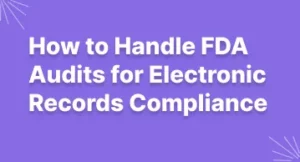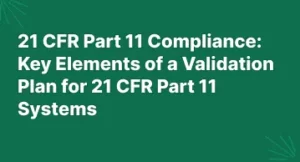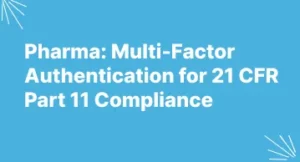E-Signing Evolution: MeiTY IT Act Amendment Empowered these Five Document Types
I. Introduction
In today’s digital era, electronic signatures (e-signatures) have emerged as a powerful tool, transforming the way we handle official documents. The recent Ministry of Electronics and Information Technology (MeitY) IT Act Amendment has ushered in a significant change, affecting the handling of five critical document types that can now be e-signed. This blog delves deep into the implications of this amendment and how it revolutionizes the management of these essential documents.
II. Electronic Signatures: A Game-Changer
Electronic signatures, or e-signatures, represent a groundbreaking advancement in the digital world. These digital representations of a person’s signature can be applied to a wide array of documents, offering numerous benefits to individuals and organizations alike.
E-signatures come in various forms, ranging from a simple typed name to advanced cryptographic signatures. What makes e-signatures transformative in the digital age is their ability to save time, reduce paperwork, and enhance convenience. They facilitate remote transactions and collaborations, making it possible to complete tasks and sign documents from anywhere in the world. This not only increases efficiency but also reduces the environmental footprint by minimizing the need for physical paperwork.
III. The Need for the MeitY IT Act Amendment
Despite the growing popularity of e-signatures, the existing legal framework was in need of an update. The previous IT Act had certain ambiguities and shortcomings in its treatment of electronic signatures. These issues necessitated the introduction of an amendment by the Ministry of Electronics and Information Technology (MeitY).
The primary objective of this amendment was to align India’s legal framework for electronic signatures with international best practices, stimulate digital innovation, and encourage the widespread use of technology for official documentation. The MeitY IT Act Amendment addresses these concerns by introducing significant changes that promise to revolutionize the way we handle documents.
IV. The Five Documents That Can Now Be E-Signed
Property Sale Deeds
Property sale deeds are pivotal documents that formally record the transfer of ownership for real estate. The inclusion of e-signatures in this process simplifies property transactions by enabling the signing of deeds electronically. This not only streamlines the process but also reduces the need for in-person meetings, ultimately expediting the transfer of property.
To ensure the integrity and authenticity of property transactions, the legal provisions and safeguards for e-signing property sale deeds are comprehensive and robust.
Rental Agreements
Rental agreements are a fundamental aspect of the housing market. The introduction of e-signatures in rental agreements simplifies the process for both landlords and tenants. E-signatures provide a secure and convenient way to enter into rental agreements, eliminating the need for physical paperwork and manual signatures.
Legal considerations for rental agreements, such as the Indian Stamp Act and the Registration Act, remain applicable when e-signatures are employed. This ensures that the agreements retain their legal validity.
Employment Contracts
Employment contracts are essential documents that outline the terms and conditions of employment between employers and employees. E-signatures streamline the creation, signing, and storage of these documents, benefiting both parties and making the onboarding process smoother and more efficient.
The legal framework for e-signing employment contracts ensures that these agreements remain legally binding and valid.
Loan Agreements
Loan agreements play a pivotal role in financial transactions, and the MeitY IT Act Amendment introduces provisions for e-signing these documents. E-signatures simplify the loan application and approval process, making it faster and more convenient for borrowers.
The legal framework for e-signing loan agreements involves the recognition of e-signatures as legally valid, provided they meet specific criteria, ensuring that the agreements remain legally binding.
Government Documents
The scope of the MeitY IT Act Amendment extends to various government documents, allowing citizens to interact with government agencies digitally. This encompasses a wide range of applications, permits, licenses, and more. E-signatures have transformed the way government services are delivered by making them accessible online.
To ensure compliance with government regulations, e-signatures on government documents are held to stringent security and authentication standards, guaranteeing the integrity and authenticity of these interactions.
V. The Legal and Security Aspects
The legal validity of e-signatures in India is a critical component of the MeitY IT Act Amendment. E-signatures are considered legally binding when they adhere to the requirements outlined in the Information Technology Act, 2000. These requirements are in place to ensure that electronic signatures maintain their integrity, authenticity, and confidentiality, making them legally enforceable.
Security measures play a pivotal role in protecting e-signatures. Various methods, including public key infrastructure (PKI), encryption, and secure transmission, are employed to safeguard electronic signatures. Certifying Authorities (CAs) play a crucial role in verifying the identities of signatories and issuing digital certificates to ensure the security and authenticity of e-signatures.
Additionally, compliance with data protection laws, including the Personal Data Protection Bill, is essential when dealing with electronic signatures. Safeguarding personal and sensitive information is a top priority, and the MeitY IT Act Amendment provides guidelines to ensure data protection in the context of e-signatures.
VI. The Process of E-Signing
E-signing documents is now more straightforward than ever, thanks to the MeitY IT Act Amendment and the availability of user-friendly e-signature platforms and tools. Here is a step-by-step guide to the e-signing process:
- Choose an E-Signature Platform: Select a reputable e-signature platform or software that offers the features you need.
- Upload Your Document: Upload the document you wish to sign to the e-signature platform.
- Add Signatories: Enter the email addresses or mobile numbers of the signatories.
- Sign the Document: Sign the document electronically using your preferred e-signature method.
- Send for Signature: Send the document to the other parties for their electronic signatures.
- Track Progress: Monitor the progress of the document, including when each party signs it.
- Download the Signed Document: Once all parties have signed, download the digitally signed document for your records.
E-signature platforms and tools are readily available, and they offer a seamless experience for users, complete with robust security features. Common challenges in the e-signing process, such as ensuring the authenticity of the signatories and protecting against document tampering, are effectively addressed through encryption, secure transmission, and the involvement of Certifying Authorities.
VII. Real-Life Examples
The impact of the MeitY IT Act Amendment and the widespread adoption of e-signatures is best understood through real-life examples. These examples showcase the tangible benefits of e-signatures in various aspects of our lives, from real estate transactions to government interactions:
- Real Estate: Consider a property owner who was able to sell property to a buyer residing in a different city. They completed the entire transaction, including the signing of the sale deed, electronically. This not only saved them time but also reduced the hassles of traveling and coordinating in-person meetings.
- Small Businesses: A small business owner recently signed a rental agreement for a new office space electronically. This allowed her to move in quickly, without the need for physical paperwork, and start her operations promptly.
- Job Seekers: Job seekers found it much easier to sign their employment contracts electronically. This not only expedited the hiring process but also allowed them to securely store their contracts in digital format, ensuring easy access when needed.
- Students: Students applying for educational loans can now do so online and sign loan agreements electronically. This has made the application and approval process faster and more convenient, particularly when time is of the essence for educational pursuits.
- Government Services: Citizens were able to apply for government permits and licenses from the comfort of their homes. The convenience of e-signatures on government documents has transformed the way public services are delivered, making interactions with government agencies more efficient and accessible.
These examples highlight the tangible benefits of e-signatures in various aspects of our lives, making complex processes more manageable and convenient.
VIII. Challenges and Future Developments
While the MeitY IT Act Amendment represents a significant step forward in the world of e-signatures, challenges remain on the path to widespread adoption. These challenges encompass awareness, trust, and digital literacy and must be addressed to ensure that e-signatures are embraced across the board.
Awareness of the legal validity and security of e-signatures is crucial. Building trust in electronic signatures, especially among individuals and organizations that are new to the technology, is essential. Additionally, promoting digital literacy, particularly in rural areas, will be a key factor in expanding the adoption of e-signatures.
The future of e-signatures is indeed promising. Emerging technologies, such as blockchain, are being explored for their potential to enhance the security and authenticity of e-signatures. Blockchain, with its decentralized and immutable nature, offers a robust solution for ensuring the integrity of digitally signed documents.
Furthermore, advancements in artificial intelligence and machine learning are likely to play a role in improving the user experience and enhancing the efficiency of e-signature platforms.
IX. Conclusion
The MeitY IT Act Amendment marks a significant milestone in India’s journey towards a more digital future. It not only simplifies the process of signing documents but also expands the scope of what can be e-signed. From property sale deeds to government documents, e-signatures have the potential to make our lives more convenient and efficient in a wide range of scenarios.
As we adapt to this digital transformation, we encourage you to explore the possibilities of e-signatures for your personal and professional needs. The convenience, efficiency, and security that e-signatures offer are undeniable.
If you’re ready to experience the benefits of e-signatures firsthand, we invite you to take the next step. Consider booking a demo with a trusted e-signature service provider or taking a free trial to explore the power of e-signatures and embrace the future of document signing with technology at your fingertips.
FAQs
1. Are e-signatures legally recognized in India under the MeiTY IT Act Amendment?
Yes, e-signatures are legally recognized in India under the MeiTY IT Act Amendment, provided they adhere to the requirements outlined in the Information Technology Act, 2000.
2. What security measures are in place to protect e-signatures and the integrity of documents?
E-signatures are safeguarded through various security measures, including encryption, secure transmission, and the involvement of Certifying Authorities (CAs) that verify the identities of signatories and issue digital certificates.
3. Can I sign government documents electronically using e-signatures?
Yes, the scope of the MeiTY IT Act Amendment extends to various government documents, allowing citizens to interact with government agencies digitally. This includes applications, permits, licenses, and more.
4. Do e-signatures simplify the process of property transactions, such as property sale deeds?
Yes, e-signatures simplify property transactions by enabling the electronic signing of property sale deeds. This not only streamlines the process but also reduces the need for in-person meetings.
5. How can I get started with e-signatures and experience their benefits?
To get started with e-signatures and explore their convenience and security, consider booking a demo with a reputable e-signature service provider or taking a free trial to see how they can revolutionize your document signing process.





